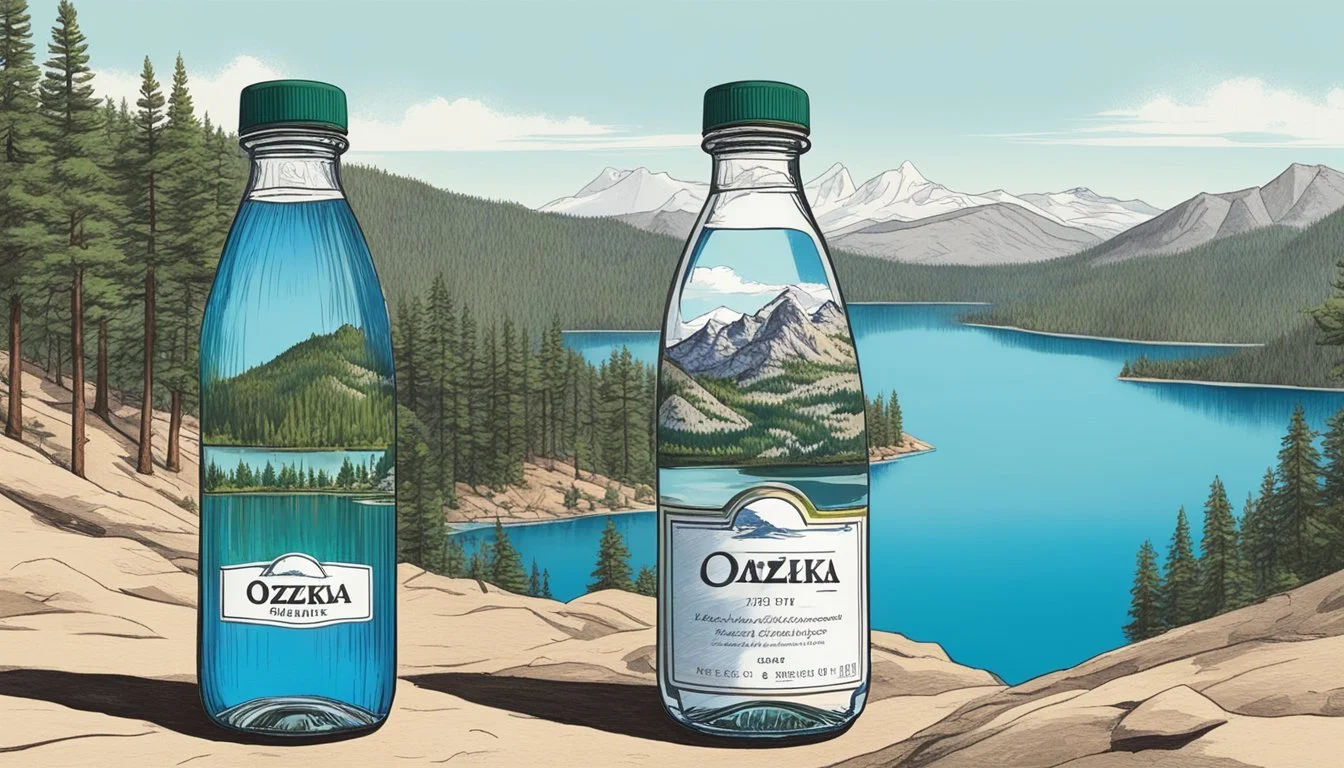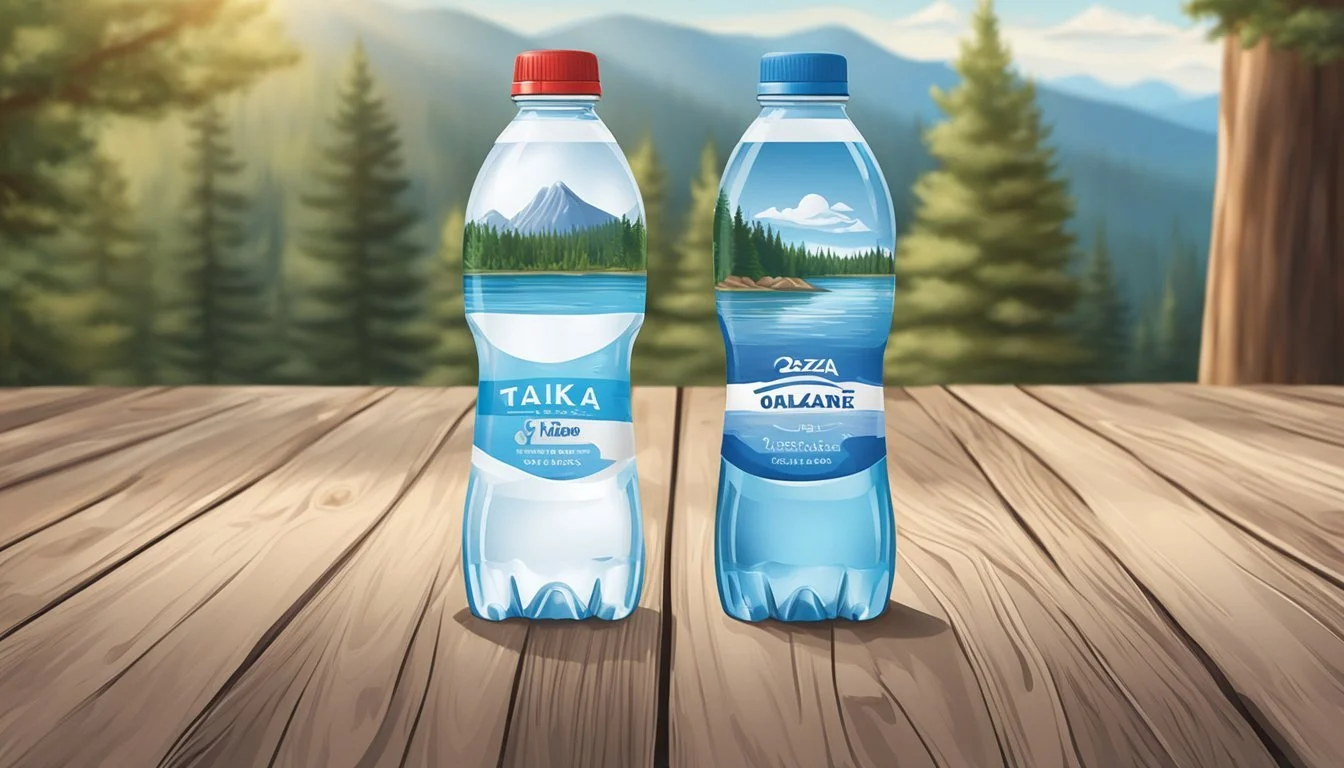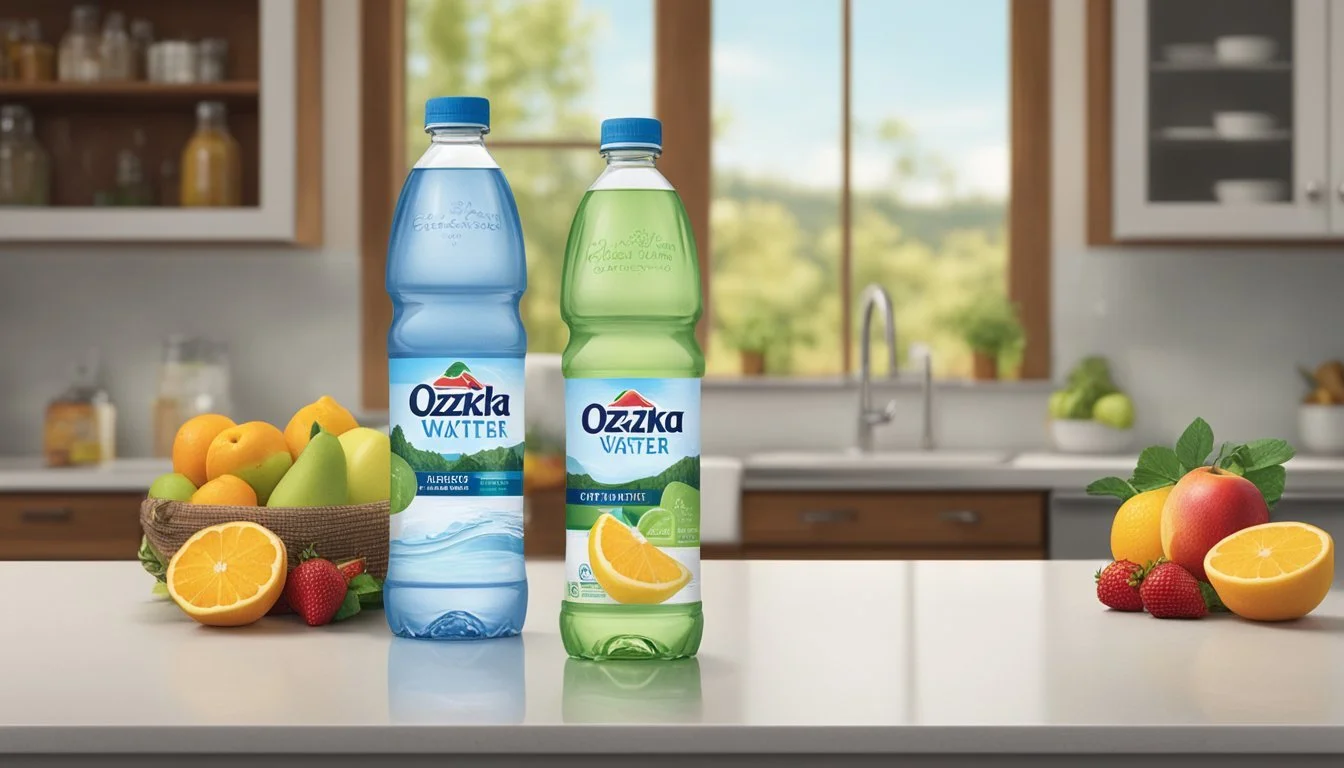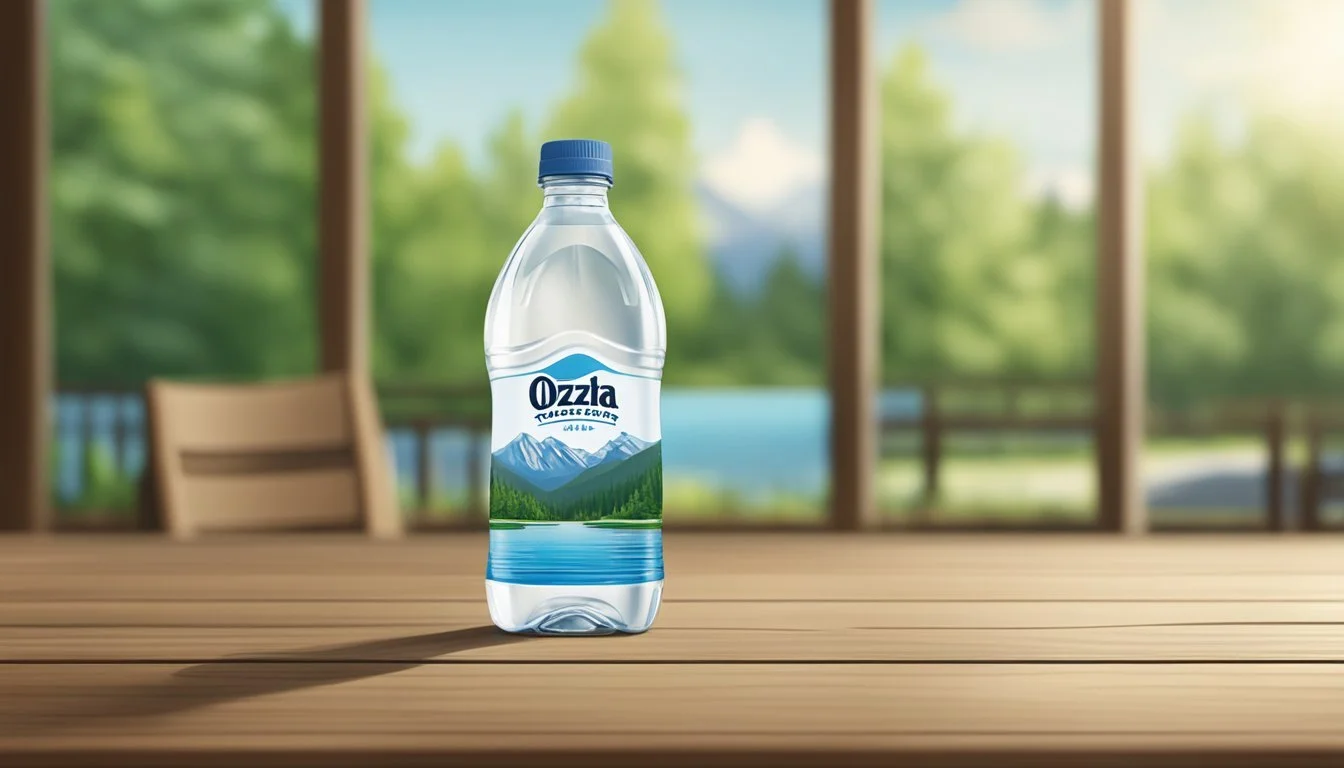Ozarka vs. Tahoe
In-Depth Comparison of Bottled Water Quality
When it comes to choosing between Ozarka and Tahoe bottled water, consumers often find themselves weighing factors like taste, origin, and cost. Both brands offer something unique, but there are clear distinctions that set them apart. Ozarka, sourcing its water locally from Texas, tends to provide a consistent and refreshing taste that appeals to those who prefer a regional touch.
On the other hand, Tahoe bottled water is celebrated for its pristine quality, often attributed to the pure sources from which it is drawn. While Ozarka focuses on affordability and regional pride, Tahoe positions itself as a premium brand, promising exceptional purity and taste. Both brands have garnered strong followings, but the choice ultimately hinges on what consumers prioritize in their bottled water experience.
Deciding between these two brands involves considering individual preferences for factors like local sourcing versus premium quality. For those who value a blend of cost-effectiveness and regional pride, Ozarka stands out, while Tahoe attracts consumers seeking high-end quality and exceptional purity.
Origin and Source
Ozarka and Tahoe waters have unique origins. Ozarka's water comes from natural springs in Texas, where the local geological conditions imbue it with a distinctive profile. Tahoe water, on the other hand, is known for its pristine source, often associated with the purity of the surrounding environment.
Exploring Ozarka's Texas Springs
Ozarka sources its water from several natural springs located across Texas. These springs are a key element in providing Ozarka with its characteristic taste and mineral composition. Texas springs, like those in the regions of Henderson and Walker counties, contribute significantly to the water's purity and mineral balance.
The water from these springs is naturally filtered through layers of underground rock, ensuring a clean and fresh taste. This filtration process also adds essential minerals, enhancing the water's quality.
Ozarka emphasizes its connection to the local environment, drawing from natural spring sources that have been tapped for over a century. This longstanding tradition highlights the reliability and trust consumers place in the brand.
Delving Into Tahoe's Water Source
Tahoe water is renowned for its clarity and purity, sourced from the areas surrounding Lake Tahoe. The region is known for its volcanic rock formations which naturally filter the water, resulting in a clean and crisp taste.
The water is collected from protected environments, ensuring minimal contamination. This pristine source is a significant selling point, offering consumers confidence in the water's high quality.
Tahoe's origin in a naturally rich area contributes to its unique taste profile. With strict regulations and protections around the water source, Tahoe maintains its reputation for being among the purest bottled waters available.
Production Process
The production process of bottled water is vitally important, affecting both the safety and quality of the final product. Ozarka and Tahoe utilize distinct methodologies in their bottling and filtration to ensure the highest standards of purity and safety.
Ozarka's Bottling Method
Ozarka sources its water locally from Texas springs. The bottling process begins with comprehensive filtration to remove any impurities. Once filtered, the water undergoes ozonation, a process where ozone is added to disinfect the water without leaving any residual chemicals.
FDA regulations mandate stringent controls in the bottling process. Ozarka adheres to these, ensuring the water meets safety standards before it reaches consumers. The entire system includes multiple safety checks and is regularly audited for compliance.
The bottled water is then packaged using PET plastic bottles, which are both lightweight and recyclable. This aspect aligns with Ozarka’s sustainability efforts, minimizing environmental impact while ensuring the bottled water remains clean and pure.
Tahoe's Filtration and Purification
Tahoe differentiates itself with an advanced filtration process. It starts with reverse osmosis, a method that pushes water through a semi-permeable membrane to remove dissolved solids and contaminants. Next, ultra-violet (UV) light treatment further purifies the water, ensuring any remaining bacteria or viruses are neutralized.
FDA regulations play a crucial role in Tahoe's process, requiring documented proof of water safety and purity. Tahoe regularly tests its water to comply with these standards, providing assurance to consumers.
After filtration, Tahoe uses BPA-free plastic bottles, which serve a dual purpose of safety and environmental consciousness. These bottles are designed to maintain the water's purity without leaching harmful chemicals, offering a fresh and clean taste.
Taste and Purity
Ozarka and Tahoe are both popular bottled water brands, but they differ significantly in their flavor profiles and mineral content. These differences can impact individual preferences and health considerations.
Comparing Flavor Profiles
Ozarka is sourced from natural springs in Texas. Its taste is often described as crisp and refreshing, with a slightly earthy undertone. Many find Ozarka to have a clean and smooth water taste that is free from any metallic aftertaste.
Tahoe water, on the other hand, is known for its purity. It boasts a pure and neutral taste, largely due to its meticulous filtration process. Consumers often appreciate Tahoe for its lack of any discernible aftertaste, which makes it a popular choice for those seeking a straightforward hydration option.
Evaluating Mineral Content
Ozarka water contains natural minerals and electrolytes that contribute not only to its unique taste but also to its potential health benefits. These naturally occurring minerals can include elements like calcium, magnesium, and potassium, which are beneficial for hydration and overall bodily functions.
Tahoe water has a different approach. Its mineral content is minimal due to the extensive filtration process it undergoes. This can make Tahoe an appealing choice for those who prefer their bottled water with fewer minerals. Some consumers might find this beneficial, especially if they are monitoring their mineral intake for dietary or health reasons.
Health and Hydration
When comparing Ozarka and Tahoe bottled water, it is essential to examine how each brand supports health and hydration. The focus will be on the hydration benefits they provide and any health impacts related to contaminants or additives.
Hydration Benefits Analysis
Ozarka is sourced from natural springs in Texas, providing naturally occurring minerals that enhance taste and hydration. Tahoe Water, sourced from the Sierra Nevada Mountains, also boasts a high mineral content. Both brands claim to offer optimal hydration.
However, Ozarka is known for a slightly higher level of sodium than Tahoe, which could be a concern for individuals monitoring their salt intake. In contrast, Tahoe maintains a lower sodium profile, making it a better choice for those on sodium-restricted diets.
Despite these differences, both brands are effective in keeping the body hydrated, which is critical for maintaining bodily functions, regulating temperature, and supporting overall health.
Health Impact Assessment
When it comes to health impacts, ensuring safe drinking water is paramount. Ozarka and Tahoe both undergo rigorous testing to meet or exceed safety standards. Neither of these brands has been known to contain heavy metals like lead or arsenic, which are harmful contaminants.
Tahoe Water emphasizes its purity by highlighting the absence of artificial additives and contaminants. This makes it an attractive option for health-conscious consumers. On the other hand, Ozarka has a clean record but contains slightly higher sodium, which might not suit everyone.
In terms of contaminants, both brands provide safe, reliable drinking water, ensuring consumers avoid exposure to harmful substances often found in less regulated sources.
Technical Specifications
When comparing the technical specifications of Ozarka and Tahoe bottled water, it is crucial to investigate their pH levels and the presence of dissolved solids. These factors influence overall taste and potential health benefits.
PH Levels Comparison
Ozarka water typically has a pH level ranging from 6.5 to 8.5. This range falls within the neutral to slightly alkaline spectrum, which many consumers find appealing due to its refreshing taste and potential health benefits.
Tahoe bottled water, on the other hand, usually has a pH level between 7.0 and 8.0. This range is neutral to slightly alkaline, similar to Ozarka, ensuring a crisp and clean taste.
A comparison of pH levels:
Brand pH Level Range Ozarka 6.5 - 8.5 Tahoe 7.0 - 8.0
Both brands offer water that is not overly acidic or alkaline, making them suitable for regular consumption.
Dissolved Solids Investigation
The presence of dissolved solids, including minerals like calcium, magnesium, and potassium, differs between Ozarka and Tahoe. Ozarka water contains varying amounts of these minerals, enhancing its taste and potentially offering health benefits.
Tahoe bottled water also contains dissolved minerals, though in different quantities. These minerals, such as calcium and magnesium, contribute to its clean and slightly sweet taste. Measuring total dissolved solids (TDS) can offer insight:
Brand TDS (mg/L) Ozarka 100 - 200 Tahoe 150 - 250
Both waters are rich in purity and essential minerals, providing a refreshing and satisfying hydration experience.
Economic and Brand Perspectives
Examining the economic strengths and brand influence of Ozarka and Tahoe can shed light on their standing in the competitive bottled water market. Key points of consideration include the market influence each brand holds and how consumer loyalty and perceptions shape their success.
Market Influence of Brands
Ozarka, a brand owned by Nestlé, benefits from Nestlé's extensive distribution network and marketing resources, positioning it strongly in various regional markets. With origins in Texas, Ozarka taps into local pride, further boosting its presence in that region. Tahoe, though smaller in scale, leverages its image of purity from a pristine, natural source to carve out a niche market.
Despite Tahoe's artisanal appeal, larger market presence often belongs to brands like Ozarka, buoyed by the parent company's influence and resources. Ozarka's association with Nestlé also allows it to implement competitive pricing strategies, often offering bulk purchase discounts through major retailers.
Consumer Loyalty and Perceptions
Consumer loyalty plays a critical role in a brand's sustained success. Ozarka has built a loyal customer base primarily in Texas and neighboring states. Its regional authenticity and consistent taste resonate well with local consumers. Moreover, the brand's emphasis on quality hydration at a reasonable cost enhances consumer trust and loyalty.
Tahoe, on the other hand, attracts consumers who prioritize environmental sustainability and natural purity. The perception of Tahoe as a premium, eco-friendly option helps it maintain a dedicated customer base despite its higher price point. Tahoe's branding efforts highlight its commitment to the environment, often appealing to environmentally-conscious consumers who prefer less commercialized options.
These dynamics drive brand loyalty, with Ozarka's budget-friendly appeal contrasting with Tahoe's premium, eco-conscious image.
Environmental and Sustainability Issues
When comparing Ozarka and Tahoe bottled water, environmental impact and sustainability are critical factors to consider. This involves examining the materials used in packaging, the sources of the water, and the efforts made by the companies to mitigate environmental damage.
Bottles and Packaging Footprint
Ozarka uses plastic bottles for its packaging. Plastic contributes significantly to environmental waste if not properly disposed of or recycled. Despite the convenience and widespread use of plastic, it presents long-term issues for landfills and oceans.
Tahoe, on the other hand, offers bottled water in both plastic and glass options. Glass is more environmentally friendly as it is fully recyclable and does not leach any harmful chemicals. Additionally, some companies now offer boxed water solutions, designed to reduce plastic use by incorporating materials like paper and aluminum.
Sustainability of Water Sources
The sustainability of water sources is an essential consideration. Ozarka sources its water from natural springs in Texas. While spring water is often marketed for its purity and natural filtration, the extraction process can impact local ecosystems if not managed correctly.
Tahoe sources its water from the pristine waters of Lake Tahoe. This source is highly regarded for its clarity and purity but demands careful attention to sustainability practices. Over-extraction from such sources can lead to depletion and potential harm to the natural environment around the lake.
Efforts in Reducing Environmental Impact
Both companies are taking steps to reduce their environmental footprint. Ozarka has initiatives aimed at increasing the recyclability of their plastic bottles. They are also exploring alternative materials and improving resource management.
Tahoe emphasizes sustainability by offering glass bottles, which are more sustainable than plastic. They also engage in local conservation projects around Lake Tahoe to ensure the region's ecological health. Some companies are experimenting with boxed water, aligning their branding with eco-friendly packaging to further diminish their environmental impact.
These efforts reflect a commitment to reducing negative environmental impact and promote more sustainable practices in the bottled water industry.
Regulations and Safety Standards
Both Ozarka and Tahoe bottled water brands prioritize safety and compliance with FDA regulations, reinforced through regular quality testing and transparent reporting. These measures help ensure that the water is safe for consumption and meets established standards.
Compliance with FDA
Ozarka and Tahoe adhere to the FDA regulations that set exceedingly stringent criteria for bottled water. These regulations encompass standards for manufacturing processes, bottling, and labeling.
Ozarka conducts meticulous testing to align with these standards, making sure each bottle is safe for consumers. Similarly, Tahoe follows rigorous protocols to ensure it complies with the FDA’s guidelines, thereby maintaining its market reputation.
Quality Testing and Reports
The quality of bottled water from Ozarka and Tahoe is assured through frequent testing. Both brands release quality reports that detail the various tests conducted and the results.
Through these reports, Ozarka provides transparency about its water sources and contaminant levels. Conversely, Tahoe presents its reports in an accessible manner, signaling its commitment to safety and public trust. Regular monitoring ensures that any potential contaminants are identified and mitigated quickly.
Comparison Summary
In this comparison summary, we'll evaluate Ozarka and Tahoe bottled waters, considering factors like source, taste, and packaging. The goal is to give readers a clear view of each brand's strengths and weaknesses to help with their purchase decision.
Final Thoughts on Ozarka vs. Tahoe
Ozarka sources its water locally from Texas, providing a naturally crisp taste. It is often sold in larger quantities, making it a cost-effective option in many regions. Tahoe, on the other hand, is known for its pristine taste, sourced from protected environments. This brand often comes in environmentally friendly packaging, appealing to eco-conscious consumers.
Price varies between the two, with Ozarka generally more affordable due to its regional focus. Tahoe's premium packaging and source may justify its higher cost for some consumers. Both brands offer reliable quality, but the choice will depend on individual preferences and priorities like cost, taste, and environmental impact.
More About Ozarka
Mountain Valley Spring Water vs Ozarka: Which Bottled Water is Better?
Ozarka vs Kirkland Signature: Which Bottled Water is Better?
Ozarka vs Richard's Rainwater: Which Bottled Water is Better?
Ozarka vs Whole Foods Italian Still Mineral water: Which Bottled Water is Better?









